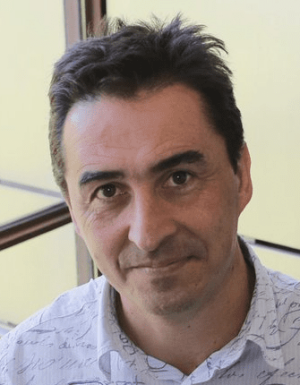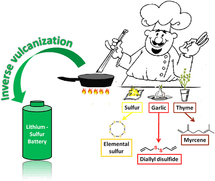
Portrait Prof. Dr. David Mecerreyes
Image: Prof. Dr. David MecerreyesCurriculum Vitae
PhD in polymer chemistry by the University of Liege (Belgium) in 1998. Then he carried out a post-doctoral stay at IBM Almaden Research Center and Stanford University in California. Back to Spain he worked for 10 years in CIDETEC.
In 2011 he became Ikerbasque Research Pofessor at POLYMAT (www.polymat.euExternal link), University of the Basque Country. Since then he has been the leader of the Innovative polymer group. In 2011 he was awarded with a ERC consolidator grant named iPES “Innovative Polymers for Electrochemical Energy Storage”. His research interest include the synthesis of innovative polymers for energy and bioelectronics. In particular his team is developing new redox polymers, poly(ionic liquid)s, iongels and ion conducting polymer electrolytes. He is co-author of more than 265 scientific articles.
Learn more about Prof. Dr. David Mecerreyes at POLYMATExternal link
Learn more about Prof. Dr. David Mecerreyes at Basque Foundation for ScienceExternal link
Abstract
Innovative sulfur containing polymers for batteries
David Mecerreyes, Nerea Casado, Iñaki Gomez
POLYMAT University of the Basque Country UPV/EHU
Centro Joxe Mari Korta,
Avenida Tolosa 72
Donostia-San Sebastian 20018 Spain
E-mail: david.mecerreyes@ehu.es
Polymers play an important role in the development of future battery technologies. Nowadays, new ion conducting polymers or polymer electrolytes, electrically conductive polymers and redox polymers are highly investigated in several battery technologies such as metal-air, redox-flow, printable batteries, sodium, magnesium or different battery chemistries.1 Polymers can be used in different parts of the battery such as redox active cathodic material, polymer electrolyte or polymeric binders.
In this lecture we will discuss our recent activities in the development of innovative polymers for Electrochemical Energy Storage. In particular, we will present the main synthetic and characterization methods as well as applications of Redox Polymers. Our recent activities related to the development of new redox active sulfur copolymers for lithium-sulfur batteries will be discussed. The talk will include the inverse vulcanization of sulfur using natural dienes, the synthesis of sulfur rich poly(anthraquinonyl sulfides) and the combination of sulfur polymers and poly(ionic liquid)s.
Graphic to the Abstract
Image: Prof. Dr. David MecerreyesReferences
- N. Casado, G. Hernandez, H. Sardon, D. Mecerreyes “Current Trends in Redox Polymers for Energy and Medicine”, Progress in Polymer Science 2016, 52, 107-135
- a) I. Gomez, O. Leonet, J.A. Blazquez, D. Mecerreyes “Inverse Vulcanization of Sulfur using natural dielnes as sustainable Materials for lithium-Sulfur Batteries” ChemSusChem 2016, 9, 24, 3419-3425 ;
b) I. Gomez, D. Mantione, O. Leonet, J. A. Blazquez , D. Mecerreyes ; Hybrid Sulfur Selenium Co-polymers as Cathodic Materials for Lithium Batteries, ChemElectroChem, 2018, 2, 260–265;
c) I. Gomez, O. Leonet, J. A. Blazquez, H. J. Grande, D. Mecerreyes; Poly(anthraquinonyl sulfides): High Capacity Redox Polymers for Energy Storage, ACS Macro Letters, 2018, 7, 419–424;
d) I. Gomez, A. Fernandez de Anastro, O. Leonet, J. A. Blazquez , H. Jurgen-Grande, J. Pyun, D. Mecerreyes ; Sulfur polymers meet poly(ionic liquid)s: bringing new properties to both polymer families, Macromolecular rapid communications, 2018, submitted

